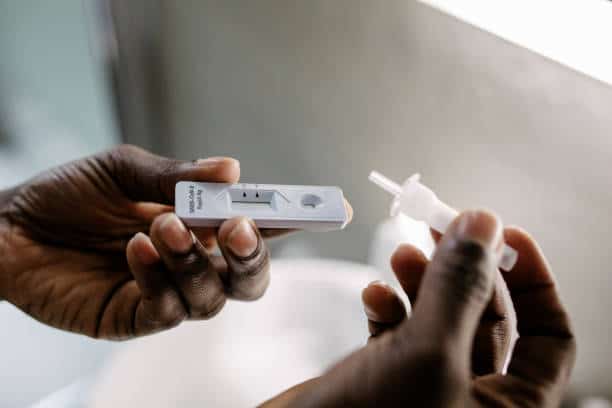
COVID-19 cases are rising this summer across much of the United States, with 27 states reporting growing or likely growing trends, according to the Centers for Disease Control and Prevention.
As of mid-July, states like Texas, Illinois, Kentucky, Virginia and Ohio were among those seeing increases. Emergency room visits for COVID-19 made up 0.5 percent of all visits nationwide—up from 0.3 percent at the start of summer, the CDC said.
Although overall respiratory illness levels remain low, experts say COVID-19 continues to show seasonal patterns with spikes in the summer, likely fueled by travel, events, and new variants.
“We are starting to hear about more young kids or older adults showing up in the emergency room with COVID-19,” Dr. Luis Ostrosky, chief of infectious diseases at UT Health Houston, told Time Magazine.
A new variant is driving the summer surge
The dominant strain in the U.S. is NB.1.8.1, which makes up about 43 percent of new cases, according to the CDC. It’s a descendant of the Omicron XBB.1.5.1 variant and is believed to be more transmissible. NB.1.8.1 was linked to a rise in hospitalizations in China earlier this year.
Some people have reported especially painful sore throats, leading to the nickname “razor blade throat,” according to NBC News. However, infectious disease expert Dr. William Schaffner told the outlet that sore throats have been common since the early days of the pandemic. “I doubt the clinical spectrum of COVID has changed substantially,” he said.
Tracking exact case numbers has become more difficult as fewer people are getting tested, and the CDC no longer collects detailed lab data. The agency now relies on estimates and wastewater surveillance to monitor trends.

RELATED: Flu, COVID Are Spreading: 8 Tips to Protect Your Heart
COVID-19 does not follow typical virus patterns
Unlike the flu or cold viruses that peak in winter, COVID-19 has shown patterns of surging multiple times a year, including summer. Public health officials say hot weather doesn’t slow transmission because people tend to gather indoors in air-conditioned spaces, especially during travel and large summer events.
“Travel, vacations, and people congregating and going to events” all contribute to increased spread, Ostrosky told Time.
Vaccine protection remains important
While vaccine demand has dropped, experts continue to recommend regular COVID-19 vaccinations. The CDC advises annual COVID shots for most people, with additional doses for adults over 65 or those with compromised immune systems.
Ostrosky said the current vaccine, which was developed for a previous Omicron variant, still offers good protection. “They are from a specific branching of Omicron that is pretty well conserved,” he told Time. “So I have pretty good confidence that the vaccine remains a good match for circulating variants.”

States seeing spikes
The CDC’s most recent estimates indicate the virus is growing in at least nine states: Arkansas, Illinois, Iowa, Kentucky, North Carolina, Ohio, Pennsylvania, Texas and Virginia. The agency reported a 95 percent chance that the epidemic is expanding, which means more states could see rising cases in the coming weeks.
Looking ahead
Experts say that while COVID-19 is no longer at emergency levels, the virus continues to evolve and pose risks—especially for older adults and people with health conditions. Getting vaccinated, staying informed, and testing when sick are still important steps in protecting yourself and others this summer.
COVID-19 “isn’t going away,” Ostrosky told Time Magazine. “It’s still with us and still evolving.” The CDC updates its “COVID Data Tracker” with data on hospitalizations, deaths, emergency department visits, and vaccinations.









